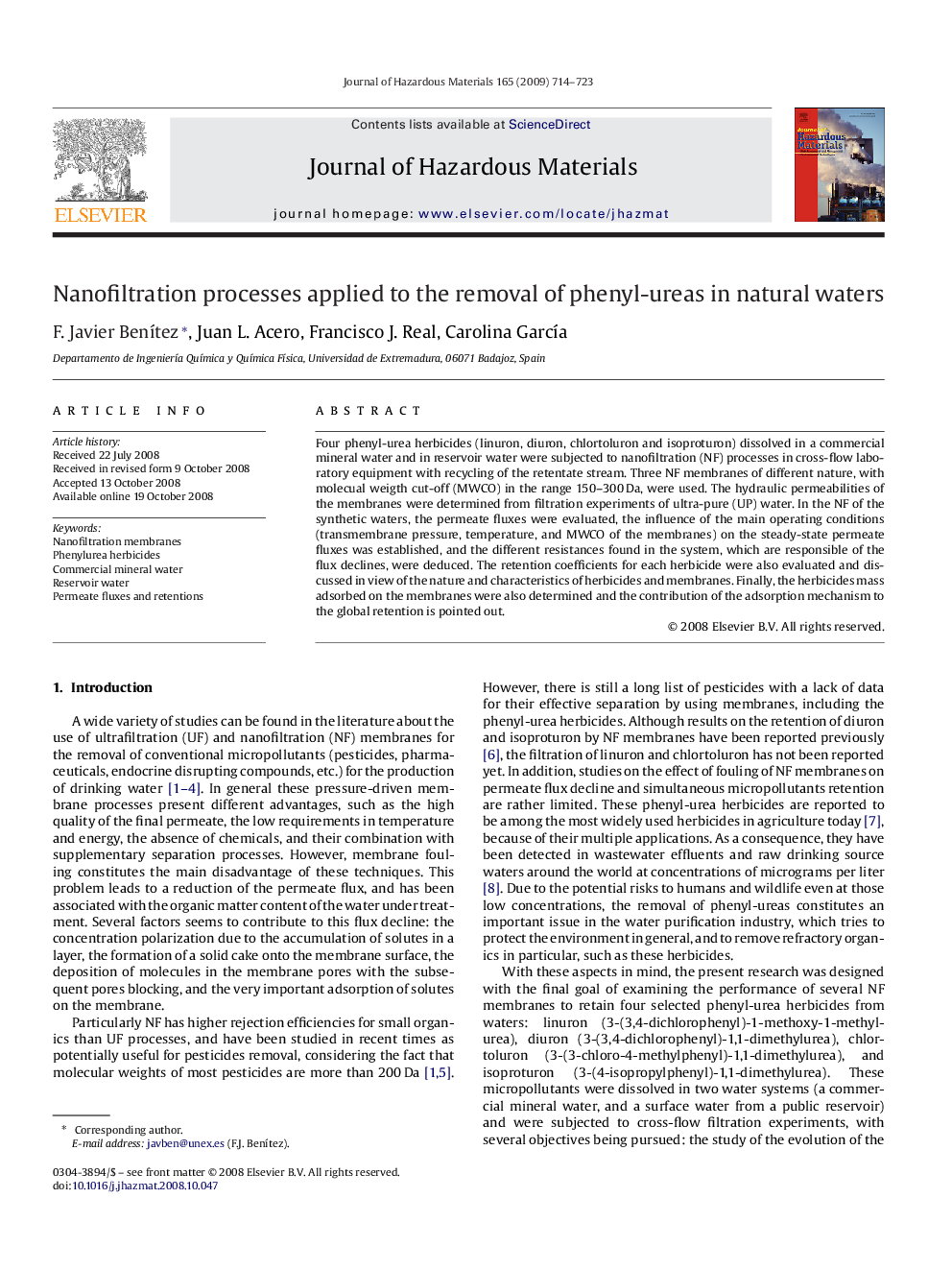| Article ID | Journal | Published Year | Pages | File Type |
|---|---|---|---|---|
| 582332 | Journal of Hazardous Materials | 2009 | 10 Pages |
Abstract
Four phenyl-urea herbicides (linuron, diuron, chlortoluron and isoproturon) dissolved in a commercial mineral water and in reservoir water were subjected to nanofiltration (NF) processes in cross-flow laboratory equipment with recycling of the retentate stream. Three NF membranes of different nature, with molecual weigth cut-off (MWCO) in the range 150-300Â Da, were used. The hydraulic permeabilities of the membranes were determined from filtration experiments of ultra-pure (UP) water. In the NF of the synthetic waters, the permeate fluxes were evaluated, the influence of the main operating conditions (transmembrane pressure, temperature, and MWCO of the membranes) on the steady-state permeate fluxes was established, and the different resistances found in the system, which are responsible of the flux declines, were deduced. The retention coefficients for each herbicide were also evaluated and discussed in view of the nature and characteristics of herbicides and membranes. Finally, the herbicides mass adsorbed on the membranes were also determined and the contribution of the adsorption mechanism to the global retention is pointed out.
Related Topics
Physical Sciences and Engineering
Chemical Engineering
Chemical Health and Safety
Authors
F. Javier BenÃtez, Juan L. Acero, Francisco J. Real, Carolina GarcÃa,
